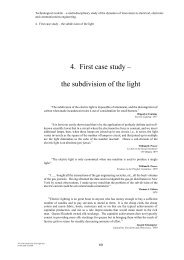Valuation Techniques for Social Cost-Benefit Analysis: - HM Treasury
Valuation Techniques for Social Cost-Benefit Analysis: - HM Treasury
Valuation Techniques for Social Cost-Benefit Analysis: - HM Treasury
Create successful ePaper yourself
Turn your PDF publications into a flip-book with our unique Google optimized e-Paper software.
the MRS between income and the non-market good using the estimated coefficients from (14).<br />
Formally WTP can be represented as follows:<br />
LS<br />
0<br />
1<br />
0<br />
0<br />
LS M Q X ) LS ( ( M WTP ) Q X ) (15)<br />
( 1 it 2 it 3 it it<br />
1 it<br />
LS 2 it 3 it it<br />
re-arranging to give:<br />
1 0<br />
( Q Q )<br />
2 it it<br />
WTP (16)<br />
LS<br />
1<br />
Here WTP can be estimated using the sub-sample that receives or gains the non-market good.<br />
0<br />
1<br />
This is the sub-sample that experiences Q Q .<br />
Similarly,<br />
WTA can be calculated as follows:<br />
LS<br />
0<br />
0<br />
0<br />
1<br />
LS M Q X ) LS ( ( M WTA ) Q X ) (17)<br />
( 1 it 2 it 3 it it<br />
1 i<br />
LS<br />
2 it 3 it it<br />
1 0<br />
( Q Q )<br />
2 it it<br />
WTA (18)<br />
LS<br />
1<br />
Here WTA can be estimated using the sub-sample that loses or <strong>for</strong>goes the non-market good.<br />
1<br />
0<br />
This is the sub-sample that experiences Q Q .<br />
It is also possible to estimate equation (14) using other measures of well-being as the dependent<br />
variable. An implicit assumption in the literature is that out of the range of well-being variables<br />
that are available, life satisfaction represents the closest measure to the economist‘s notion of<br />
utility and has there<strong>for</strong>e been used most frequently. Clark and Oswald (2002) use life satisfaction<br />
and the General Health Questionnaire (GHQ) index of mental health as proxies <strong>for</strong> utility.<br />
Powdthavee and van Praag (2011) use a range of well-being indicators when valuing health<br />
states. Generally, using life satisfaction as the well-being measure results in lower value<br />
estimates because income is more strongly correlated with life satisfaction. In this paper we take<br />
the standard approach and focus on life satisfaction.<br />
Estimation<br />
Monetary values <strong>for</strong> a wide range of non-market goods and ‗bads‘ have been estimated using<br />
the life satisfaction approach. Annex B tabulates the main life satisfaction method studies to<br />
date.<br />
In Chapter 4 below we discuss the main methodological challenges associated with the life<br />
satisfaction approach. With reflection on this, in Chapter 5 we then provide some guidelines and<br />
a description of the estimation procedure <strong>for</strong> the life satisfaction approach.<br />
15





![AIRTO [Professor Dr Brian Blunden] - HM Treasury](https://img.yumpu.com/15492848/1/184x260/airto-professor-dr-brian-blunden-hm-treasury.jpg?quality=85)










